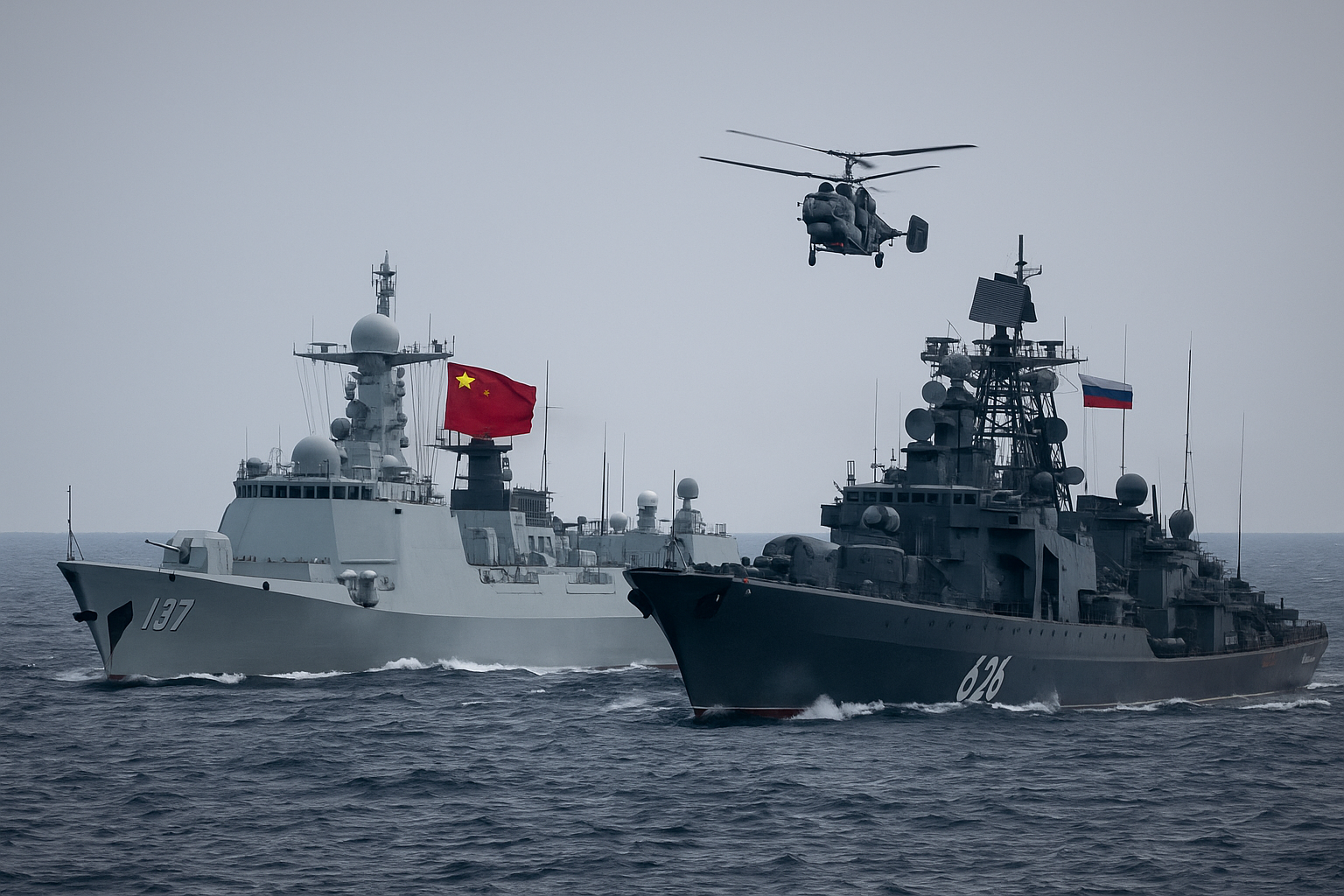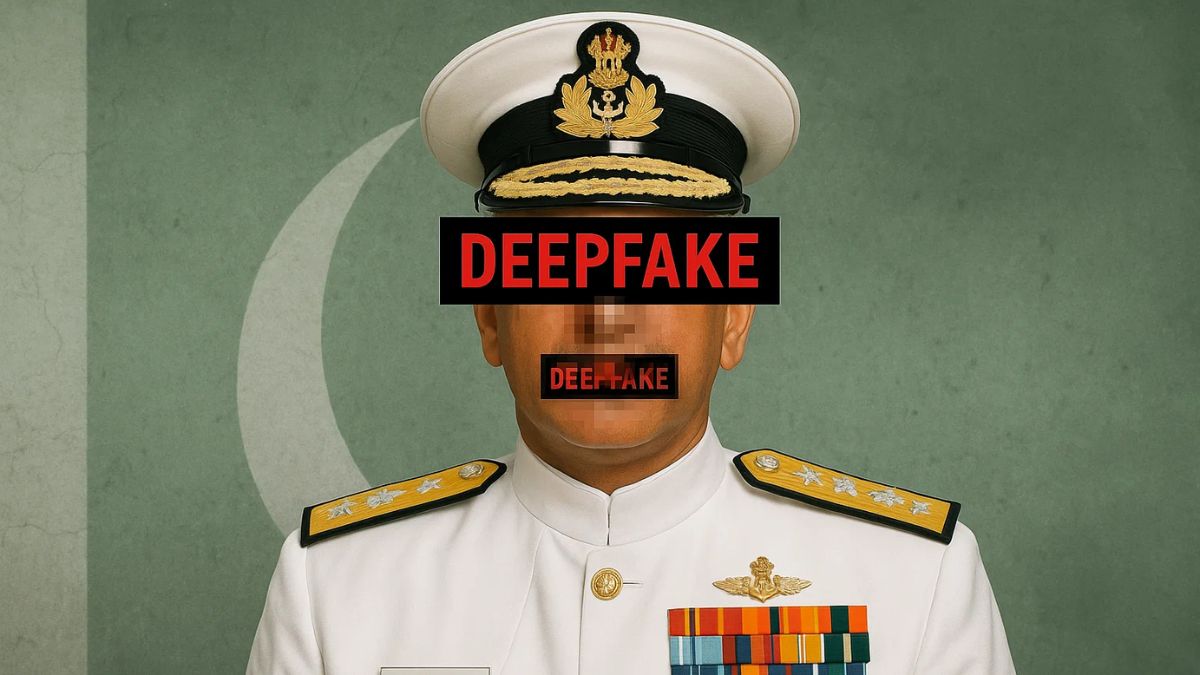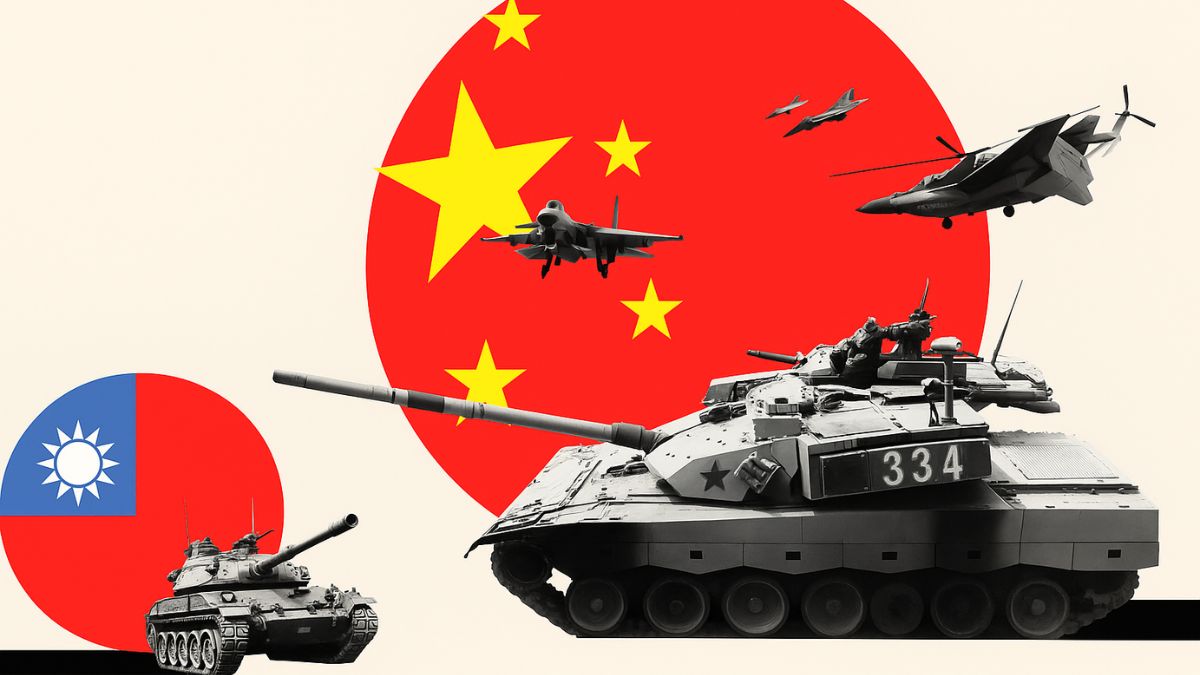China-Russia Naval Drills in Sea of Japan Signal Strategic Shift in Indo-Pacific Power Balance

Image Courtesy: AI-generated via OpenAI’s DALL·E
In a bold move that highlights their tightening strategic alignment, China and Russia launched their annual “Joint Sea-2025” naval exercises in the Sea of Japan, signalling not only a deepening of military ties but also a direct challenge to the US-led Indo-Pacific security architecture.
With tensions already high in the region, these drills, featuring advanced anti-submarine, air defence, and missile operations, mark a significant step in the Beijing-Moscow effort to reshape the regional maritime order.
This year’s iteration of the Joint Sea drills, which began near the Russian port city of Vladivostok, includes four Chinese warships, among them Type 052D guided-missile destroyers Shaoxing and Urumqi, and a fleet of Russian vessels.
The exercise, which will transition into joint naval patrols across the western Pacific, reflects a calculated geopolitical message to regional powers, particularly Japan, South Korea, India, and the United States.
What are the strategic implications for the Indo-Pacific?
The Sea of Japan, a strategically sensitive zone bordering US allies like Japan and South Korea, is not a random choice. The inclusion of submarine rescue, anti-submarine warfare (ASW), and anti-missile drills indicates both nations are focusing on countering Western undersea capabilities and missile defence systems. These capabilities are central to US and allied power projection in the region.
For India, this development complicates the evolving strategic dynamics. New Delhi, a member of the Quad grouping alongside the US, Japan, and Australia, has sought to counterbalance China’s maritime assertiveness while maintaining a delicate defence partnership with Russia.
The visible alignment of Moscow with Beijing in military terms presents a diplomatic dilemma for India, which continues to rely on Russian defence hardware even as it pivots toward deeper cooperation with Western powers.
Is this a unified front against US influence?
China and Russia have consistently framed their strategic cooperation as a response to American “hegemony.” Since Russia’s 2022 invasion of Ukraine, Beijing has cautiously supported Moscow — economically, diplomatically, and increasingly, militarily. These drills reaffirm that military coordination is now a central pillar of their relationship.
The planned post-drill joint patrols in the Pacific Ocean echo similar operations from 2022 and 2023 that unnerved US allies, especially when these patrols neared Japanese and South Korean waters.
With the US reinforcing its alliances and expanding its military footprint across the Indo-Pacific, such as deploying nuclear-capable submarines to South Korea and strengthening access agreements with the Philippines, this joint show of force is intended as both a deterrent and a provocation.
What is the road ahead?
The China-Russia naval drills are not merely tactical exercises. They are symbolic of a shifting global order, where the Indo-Pacific becomes a primary theatre of great power rivalry. While not an outright military alliance, the operational synergy between Beijing and Moscow is becoming more integrated and more strategic.
As Quad nations and ASEAN countries watch closely, these drills are a stark reminder that the geopolitical temperature in the Indo-Pacific is rising, and that future maritime stability will depend on how quickly regional powers can adapt to this emerging multipolar security environment.







